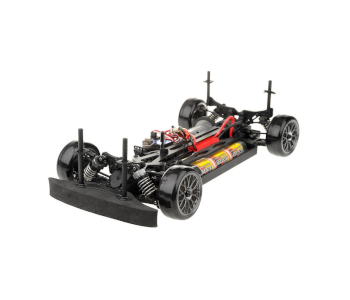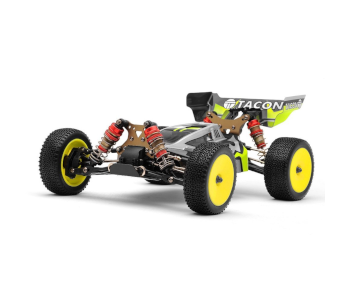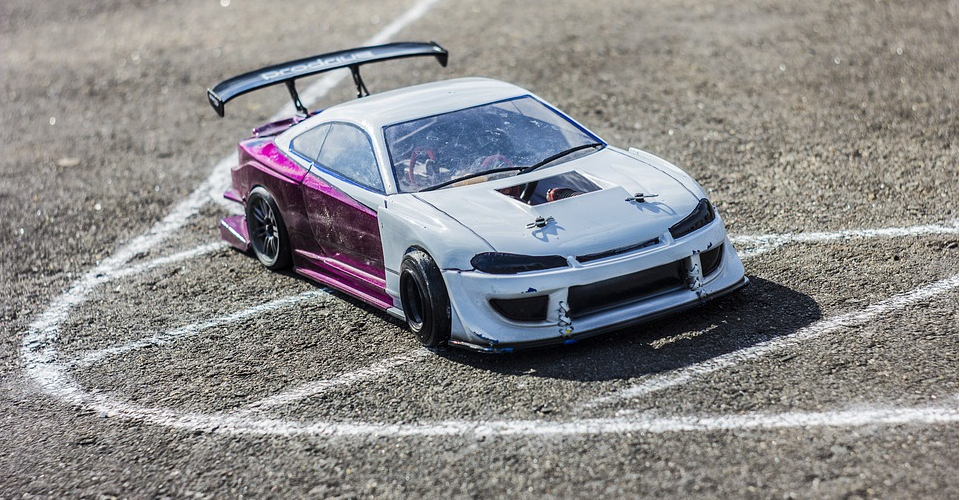How to Make an RC Car Faster – Easy Upgrades and Mods
This page explores 6 proven ways on how to make an RC car go faster. But why bother? After all, today’s vehicles are already quick, even at the entry-level. Well, speed has fascinated RC’ers forever, and the faster the better. It’s not always easy for newbies to handle the extra oomph, though. That’s why some models have different speed modes. And cars for younger enthusiasts barely chug along.
The hunger for speed grows as RC hobbyists get more skilled—as they inevitably do. What used to seem fast starts to feel like a crawl in comparison. The adrenaline rush is no longer there. Many racing fans upgrade to faster, more powerful models, but it’s not always necessary.
Cheaper RC Cars CAN Go Faster
It’s possible to make a cheap RC car go faster with a few tweaks. Learning how to fine-tune a vehicle is an excellent way to become a more skilled driver. It’s not possible to boost the performance of every car using all the tips on this page. Even so, you should at least be able to apply some of them.
This no-nonsense guide shows you which parts to swap. It highlights the areas that affect performance and ways to fix them. Working on cheaper vehicles is a great way to prepare for hobby-grade models later. The same tweaks can also apply to high-end cars if you already have one.
Warning! Check that your model can handle any upgrades before you modify it.
How RC Model Cars Move
Knowing what to do and how stuff works can make someone a better RC mechanic and driver. Here’s a breakdown of the things responsible for the energy of an electric RC car:
- Transmitter (Tx) and Receiver (Rx) is how users communicate with the car
- The motor is the car’s powerhouse and responsible for moving the model
- A throttle delivers power to the car from the electronic speed control (ESC)
- The Battery is the model’s power source, or fuel if you prefer
There’s more to it than this, but the list above is the basic power/control setup of your RC car. An increase in performance is not only about the delivery of power, though. Force means little if the vehicle falls short in other areas. For example, aerodynamics, weight, and moving parts.
Boosting the Speed of an RC Car
Below are the 6 areas that can help boost the top speed and acceleration of an RC car:
- Reduce the weight
- Use different tires
- Adjust the vehicle’s gear ratio
- Upgrade to a better motor
- Use a better battery
- Invest time refining driving skills
There’s not a lot to consider once you know what to do. Sometimes, all it takes is a small tweak to make a big difference in performance. The rest of this guide looks at the above points in more detail.
#1 Reduce the model’s weight

Sometimes it’s possible to reduce a model’s weight to make the RC car run faster. It’s one of the cheapest approaches and therefore one of the first things to consider. The way to do this is to replace various parts with lighter alternatives. The lightest materials used in radio-controlled cars include aluminum, carbon, and graphite.
The weight differences may seem minimal, but that’s often the case with fine-tuning. Small tweaks often result in big differences when it comes to winning and losing. The larger the scale, the better the outcome. The parts you can change all depend on the model.
#2 Use different tires
Tires are essential for grip, but they can also play a part in the speed of an RC car. They’re akin to the shoes on our feet in that regard. Athletes wouldn’t move too fast if they tried to race in rubber boots. Likewise, a rock climber couldn’t clamber up a cliff face wearing soccer cleats. You get the idea. The tires that come with a model may not always be its best option. That seems odd, but it’s true.
Smooth tires vs. knobby
Consider the surfaces you drive over. An RC car that can move over several terrains benefits from different treads. Avoid cheap tires as they are poor performers and a false economy.
Here’s a quick list of which tires suit what surfaces:
- Slicks for tarmac and pavements
- Full spikes for mud and wet grass
- Mini pins for carpets, especially deep pile
- Mini spikes for an all-around decent grip
Knowing the right tire tread type is the easy part. Smooth tires work best on flatter surfaces—that’s it. And knobby tires—in all their forms—are best suited for off-road. The trick is to invest in quality.
#3 Adjust the gear Ratio

Adjusting the gear ratio—when possible—is an easy, low-cost way to boost your car’s speed. An RC car has two gears. One is the pinion gear and the other the spur. Pinion gears with more teeth make the car go faster at the top end. Or, opt for a smaller pinion with fewer teeth if the goal is to improve acceleration rather than higher top speeds. That’s something only you can know.
Upgrading the spur gear can also improve acceleration and top speeds. It’s not as noticeable as changes to the pinion gear. Still, sometimes a small improvement can produce favorable results in a tight race. A smaller spur gear results in a slightly higher top speed. Increasing the spur gear size shaves a bit off the top end but gives more oomph to acceleration.
#4 Upgrade the model’s motor
RC motors play a significant role in speed performance. Brushed DC motors can be fast, but they’re not as efficient as the brushless alternatives. Brushless motors also last longer than brushed ones and need little to no maintenance. The downside to brushless motor technology is the higher cost.
#5 Use a better battery
Not all batteries are equal. They also affect the overall performance of an RC car—including its speed. It’s especially noticeable when upgrading from an NIMH to a LiPo battery pack. LiPos are lighter and more powerful than NIMH batteries. Let’s say your model already has a 2-cell LiPo. It may be possible to upgrade to a 3-cell option that has more voltage and produces more power.
There are a few downsides to LiPo batteries. The difference in power can make the vehicle harder to control for one. That’s something to think about if you’re a novice. LiPos are also more expensive than NIMH, and you may need to buy a separate charger if you don’t already have one.
Never guess with RC batteries
It’s vital to check model compatibility before upgrading batteries. Seek expert advice if you’re unsure, but NEVER assume. It can be damaging and potentially dangerous to put the wrong battery in any RC model. However, the rewards can be significant with the proper upgrade.
#6 Improve your driving skills
Competing and winning is not a simple case of who has the fastest car. Speed and acceleration are vital, but skill also plays a huge role here. Anyone can push their car to the highest speed, yet not every driver can handle it. A talented RC’er with a slower car can still win races against competitors with much faster models. That’s why it’s crucial to work on one’s driving skills.
The Conclusion
That concludes this guide on how to make an RC car go faster. Remember to manage upgrades with caution and reach out to experts if you’re unsure. And don’t forget to work on—and modify—your driving skills as well as the car. Decide whether you need to boost the acceleration or top speeds and make the changes. RC’ers who learn how to tweak get as much fun out of tinkering as they do driving.

